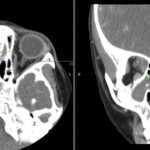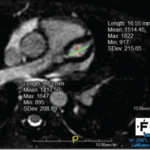Granulomatosis with polyangiitis (GPA) is a small vessel vasculitis associated with anti-neutrophil cytoplasmic antibodies (C-ANCA), specifically proteinase 3 (PR3) ANCA. GPA classically presents with multi-organ involvement. The first description of GPA defined a triad of features: 1) systemic necrotizing angiitis, 2) necrotizing inflammation of the respiratory tract and 3) necrotizing glomerulonephritis.1 Few cases of digital…









